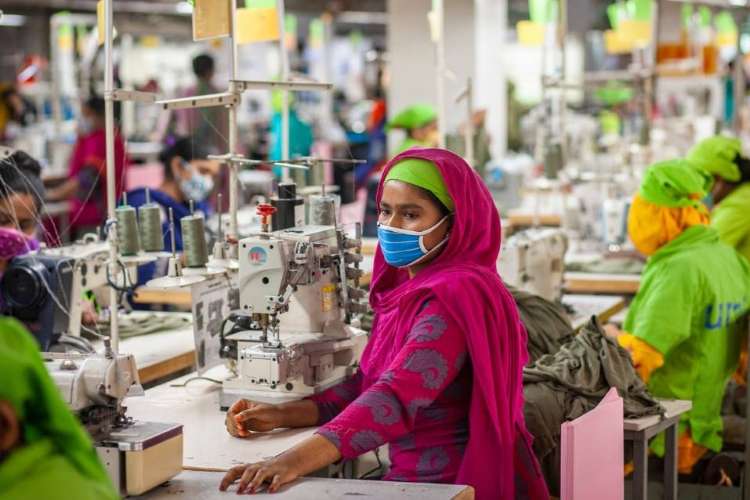Missing women in manufacturing industry: India’s ambition to become a developed economy by 2047 depends on creating large-scale, industry-driven employment. The government’s push — through production-linked incentive scheme and support for small and medium enterprises — looks to strengthen manufacturing and generate jobs. Yet, a critical imbalance persists: educated men are joining the workforce in large numbers, while women’s transition from classrooms to factories remains limited.
Share of women in manufacturing is barely 10% of the directly employed workers. This is not just a gender gap but a macroeconomic inefficiency. Excluding educated women from the workforce wastes human capital, lowers productivity, and constrains inclusive growth.
India’s industrial initiatives, such as the ₹76,000 crore India Semiconductor Mission (ISM), are expected to create over one million skilled jobs by 2030 in sectors like electronics, automotive, and renewable energy. Meanwhile, the All India Survey on Higher Education (AISHE) 2021–22 shows a surge in women’s enrolment across disciplines. This points to a large but underutilised pool of female talent that a more inclusive manufacturing ecosystem could harness.
READ I Yuan’s ascent: China builds a parallel financial order
Missing women in manufacturing
The Periodic Labour Force Survey (PLFS) 2023–24 estimates that India’s manufacturing sector employs about 68 million workers, of whom 23 million are women. Share of women in manufacturing has risen from 23.9% in 2018 to 35.2% in 2025—an encouraging rise but still short of parity.
Globally, India lags behind. According to the International Labour Organisation (ILO), women make up 55.1% of the manufacturing workforce in Vietnam and 48.7% in Thailand, while India stands at just 31.9%. Within the country, participation varies sharply: Telangana and Arunachal Pradesh have over half their manufacturing workforce as women, while Delhi, Haryana, and Goa record minimal female representation.
This uneven share of women in manufacturing reflects not a lack of education or ambition, but structural barriers — skill gaps, restricted mobility, and unpaid care work — that prevent women from converting education into employment.
Barriers behind the numbers
High literacy has not translated into employability. PLFS data shows that only 6% of women in manufacturing have formal or on-the-job training. Kerala illustrates this paradox: despite female literacy exceeding 90%, female youth unemployment stands at 47.1%—among the highest in the country. Education alone, without targeted skills, yields limited outcomes.
The government’s Support to Training and Employment Programme for Women (STEP) has helped, but uneven implementation limits its impact. Karnataka has effectively deployed STEP funds, while Odisha and several northern states lag. Regular capacity-building and performance-linked monitoring can bridge this training-to-job divide.
Cultural norms and safety concerns continue to limit women’s mobility. Many cannot relocate or travel long distances for work, while jobs suited to their skills remain concentrated in cities. Government initiatives such as Kerala’s free bus travel and Delhi’s Pink Pass have improved access, but costs and safety concerns persist. On average, women spend about ₹1,500 a month on last-mile travel.
Expanding rural industrial hubs and encouraging public–private partnerships (PPPs) for decentralised manufacturing can create viable local employment, reducing dependence on urban migration.
Unpaid domestic and caregiving work remains the largest invisible barrier to women’s employment. Women’s labour participation drops sharply after marriage or childbirth. Few employers offer childcare or flexible working arrangements, seeing them as costs rather than enablers. Without shared caregiving infrastructure, women are pushed out of the formal workforce.
Pathways to a gender-inclusive industrial model
Promote village-centred industrial clusters: India’s next industrial phase must be rooted in its villages. Light manufacturing, agro-processing, and textiles can thrive in local clusters managed by women’s self-help groups (SHGs). Programs like One District One Product (ODOP) and SFURTI can align gender inclusion with regional strengths. Telangana’s handloom clusters and Tamil Nadu’s food-processing hubs show the potential of such models.
Redefine workplaces through decentralised manufacturing: Digitalisation allows the concept of a “factory” to move beyond physical premises. Encouraging home-based or satellite production—where women assemble, stitch, or package goods for anchor firms—can dramatically expand employment. Setting up “Rural Production Hubs” to aggregate output, manage quality, and handle logistics can replicate successes like Bangladesh’s rural garment cooperatives and India’s Amul model.
Gender-responsive industrial incentives: Industrial policies should reward inclusion of women in manufacturing industry. Factories that employ or train a minimum percentage of women could receive tax credits or infrastructure support. Beyond entry-level jobs, leadership and technical training should prepare women for supervisory and managerial roles.
Strengthen local skill infrastructure: District-level Women Skill Missions should align with local industrial strengths—electronics assembly in Noida, eco-crafts in Odisha, or food processing in Telangana. Collaboration among Industrial Training Institutes (ITIs), local industries, and women’s cooperatives can ensure that training translates into employment rather than certificates.
Build care and digital ecosystems: Participation of women in manufacturing industry depends on social and digital infrastructure. Panchayats and local bodies should invest in community creches, shared kitchens, and digital centers to free women’s time for paid work. Expanding access to platforms like ONDC and GeM will help women entrepreneurs reach markets directly, reducing dependency on intermediaries.
Factories closer to women
Empowering women in manufacturing is not just about jobs—it is about reimagining India’s economic geography. Bringing factories closer to women, rather than expecting women to relocate, can bridge the education–employment divide that sidelines millions of skilled workers.
Integrating gender goals into industrial policy, promoting decentralised manufacturing, and investing in local production networks can unlock India’s latent female workforce. This shift will reshape social norms, deepen local economies, and accelerate inclusive growth.
As India marches toward its 2047 goal, its progress will be judged not only by GDP but by how effectively it turns women’s education into economic opportunity. A future where women share equally in industrial growth is not just desirable—it is indispensable to the nation’s development story.
John Tharayil Mathew is a B Sc Economics (Honours) student, and Dr Deepa Palathingal is Assistant Professor, Department of Economics, CHRIST University Delhi NCR Campus.

